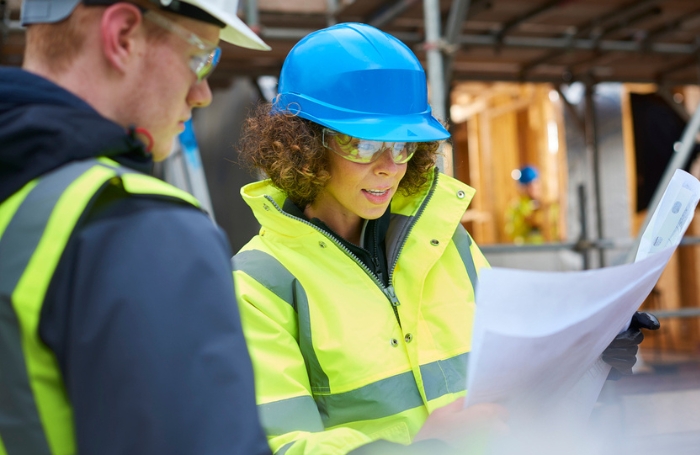The new Guide to Products Critical to Safe Construction published by the Chartered Institute of Building (CIOB) marks another step forward in the industry’s efforts to transform the culture around the specifying of safety critical products, as called for by Dame Judith Hackitt in the wake of the Grenfell inquiry.
Developed in collaboration with the Construction Products Association, the Code for Construction Product Information (CCPI), the Institution of Structural Engineers, and RIBA, the guide is free to download and particularly relevant to designers. It focuses on identifying safety-critical products and systems, and outlines processes to demonstrate their compliance.

How does the guide help to demonstrate compliance?
Whether for local building control or Gateway 2 submissions to the Building Safety Regulator for higher-risk buildings (HRBs), demonstrating fire and structural safety compliance may involve:
- third-party product certification
- declarations of performance
- test reports
- other technical assessments
Paul Nash, Chair of CIOB’s Quality Implementation Group and member of the Hackitt initiated Industry Safety Steering Group, says that the guide encourages designers and specifying contractors to take direct responsibility for product safety, rather than relying on others. The Hackitt inquiry highlighted the failure of the regulatory regime to ensure product safety on specified projects.
Additionally, the new CIOB guide augments and supports the existing Guide to Managing Safety-Critical Elements in Building Construction (which will be updated) published jointly by CIOB and RIBA, Paul says. While the earlier guide focuses more on product safety in relation to the construction process, the new guide focuses more on sourcing information and critical product safety data and guidance to evidence compliance.
“The guide is focused on what you need to know, and can be used as a portal to further sources of information. It’s also an attempt to bring together some best practice guidance through case studies,” Paul adds.
What is the scope and responsibilities of the guide?
The guide provides best practice for identifying, specifying, procuring, installing, and maintaining safety-critical products. While it does not detail duty holder roles under the Building Safety Act, it outlines responsibilities for designers and contractors under the revised Building Regulations 2010.
It also explains how product information should be communicated throughout the supply chain, with suppliers required to provide appropriate evidence, such as CE/UKCA markings, CCPI declarations, or other third-party certifications.
Elsewhere, the guide addresses products that are "critical to safe construction," defined as those whose failure, omission, or incorrect installation carries a risk of causing a serious injury or fatality.
The guide uses definitions, aligning with Uniclass for:
- Element: A form of construction defining a space (like walls, floors, roofs), often comprising systems or products;
- System: An assembly of one or more products forming part of a building or performing a function (like glass wall systems and fire extinguishing systems).
It stresses that safety-critical functionality often arises from the final combination of products within a system, rather than from individual products alone.

How does the guide support Principal Designers?
Principal Designers, who must ensure compliance with Part A (Structural Safety) and Part B (Fire Safety) of the Building Regulations, will find the guide particularly useful. For Gateway 2 submissions, they may submit a performance specification instead of a named product or system, subject to regulator approval, but must later demonstrate compliance and provide supporting evidence.
How does the guide encourage a proactive and supportive approach?
The guide encourages early identification and prioritisation of safety-critical products, recognising that their safety often depends on correct integration and installation. It promotes a structured approach involving:
- risk evaluation (eg, HAZID)
- robust compliance documentation
- diligent procurement
- transparent supply chain management
- competent installation
- maintenance of the Golden Thread of information throughout the building lifecycle
It also reinforces the importance of competence among duty holders and the provision of clear, accurate, and verifiable product information, as championed by initiatives like the CCPI.
Duncan Johnson, Deputy Director of Construction Products Regulation at the Office for Product Safety and Standards (OPSS) said “I welcome the collaborative efforts behind this guide, which brings together expertise from across the built environment sector to support safe and compliant construction, underpinned by clarity and consistency in product information. This guide contributes to raising standards and improving safety across the construction industry”.
Download the Guide to Products Critical to Safe Construction.
Thanks to Paul Nash, Paul Nash Consultancy
Text by Neal Morris. This is a professional feature edited by the RIBA Practice team. Send us your feedback and ideas.
RIBA Core Curriculum topic: Legal, regulatory and statutory compliance.
As part of the flexible RIBA CPD programme, professional features count as microlearning. See further information on the updated RIBA CPD core curriculum and on fulfilling your CPD requirements as a RIBA Chartered Member.









